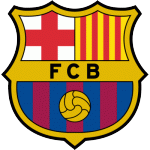Balotelli Beri Gelandangan Rp14 Juta
RABU, 20 APRIL 2011, 14:15 WIB
Haryanto Tri Wibowo
Mario Balotelli (AP Photo/Luca Bruno)
VIVAnews - Meski dicap sebagai salah satu pemain dengan sikap yang buruk, Mario Balotelli tidak menghentikan sikap dermawannya. Terakhir, striker Manchester City ini memberi gelandangan 1.000 pound usai bermain judi di sebuah casino.
Balotelli, yang mendapat gaji 100 ribu pound atau Rp1,4 miliar per pekan di Manchester City, dikenal sebagai salah satu pemain yang dermawan. Sejak kedatangannya ke City, striker 20 tahun tersebut sering memberi uang kepada gelandangan-gelandangan yang dia lihat di sekitar kota Manchester.
"Mario benar-benar dermawan. Dia selalu memberikan 20 pound kepada anak kecil penjual majalah tanpa mengambil majalah yang dibelinya," ujar seorang sumber kepada The Sun.
Kebiasaan itu terus dilakukan oleh Balotelli. The Sun melansir, Rabu 20 April 2011, Balotelli memberi 1000 pound atau sekitar Rp14 juta kepada seorang gelandangan usai bermain judi tepat di depan 235 Casino, pekan lalu. Balotelli dikabarkan sukses menang 25 ribu pound atau sekitar Rp353 juta di casino tersebut.
"Ada seorang pria, dia selalu terlihat di sekitar kota dengan rambut gimbal dan jenggot tebal. Dia selalu membawa dua tas besar. Dia ada di luar klub di tengah malam, jadi Mario memberinya sejumlah uang usai menang besar," kata sang sumber. "Gelandangan itu tidak percaya dengan keberuntungan yang didapatnya. Itu cukup untuk menghidupinya satu bulan."
Sayang, sikap dermawan yang diperlihatkan Balotelli tidak diimbangi dengan sikapnya di lapangan hijau. Terakhir, Balotelli menjadi pemicu kemarahan sejumlah pemain Manchester United, khususnya Rio Ferdinand, karena merayakan kemenangan di depan fans MU.
Bulan lalu, dia mendapat peringatan dari klub setelah melempar dart (panah mainan) ke arah pemain yunior City. Hal itu dilakukannya setelah mendapat kartu merah saat melawan Dynamo Kiev di Liga Eropa. Total, hingga saat ini Balotelli harus membayar denda hingga Rp4,2 miliar atas aksi buruknya di lapangan hijau. (art)
• VIVAnewsBalotelli, yang mendapat gaji 100 ribu pound atau Rp1,4 miliar per pekan di Manchester City, dikenal sebagai salah satu pemain yang dermawan. Sejak kedatangannya ke City, striker 20 tahun tersebut sering memberi uang kepada gelandangan-gelandangan yang dia lihat di sekitar kota Manchester.
"Mario benar-benar dermawan. Dia selalu memberikan 20 pound kepada anak kecil penjual majalah tanpa mengambil majalah yang dibelinya," ujar seorang sumber kepada The Sun.
Kebiasaan itu terus dilakukan oleh Balotelli. The Sun melansir, Rabu 20 April 2011, Balotelli memberi 1000 pound atau sekitar Rp14 juta kepada seorang gelandangan usai bermain judi tepat di depan 235 Casino, pekan lalu. Balotelli dikabarkan sukses menang 25 ribu pound atau sekitar Rp353 juta di casino tersebut.
"Ada seorang pria, dia selalu terlihat di sekitar kota dengan rambut gimbal dan jenggot tebal. Dia selalu membawa dua tas besar. Dia ada di luar klub di tengah malam, jadi Mario memberinya sejumlah uang usai menang besar," kata sang sumber. "Gelandangan itu tidak percaya dengan keberuntungan yang didapatnya. Itu cukup untuk menghidupinya satu bulan."
Sayang, sikap dermawan yang diperlihatkan Balotelli tidak diimbangi dengan sikapnya di lapangan hijau. Terakhir, Balotelli menjadi pemicu kemarahan sejumlah pemain Manchester United, khususnya Rio Ferdinand, karena merayakan kemenangan di depan fans MU.
Bulan lalu, dia mendapat peringatan dari klub setelah melempar dart (panah mainan) ke arah pemain yunior City. Hal itu dilakukannya setelah mendapat kartu merah saat melawan Dynamo Kiev di Liga Eropa. Total, hingga saat ini Balotelli harus membayar denda hingga Rp4,2 miliar atas aksi buruknya di lapangan hijau. (art)






























